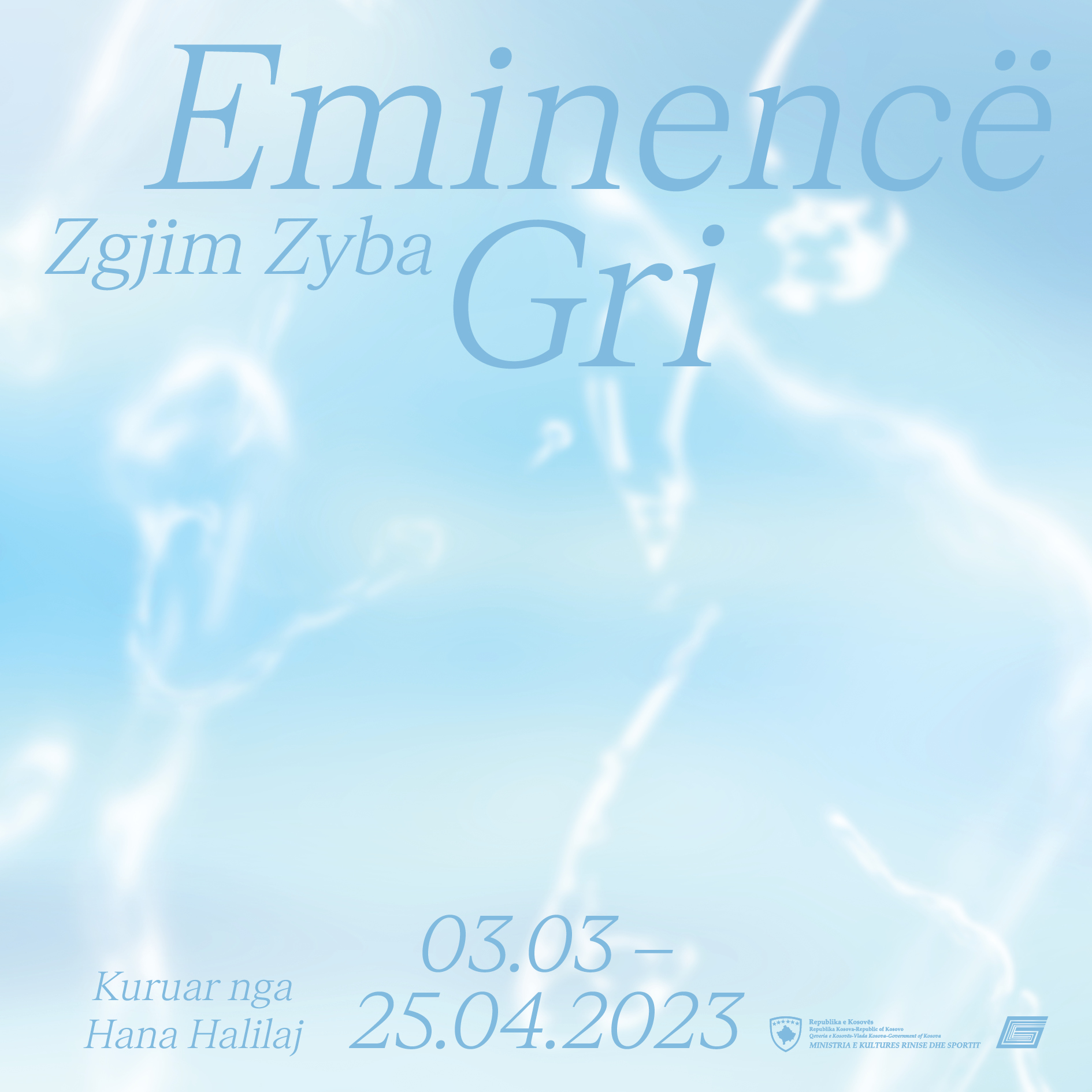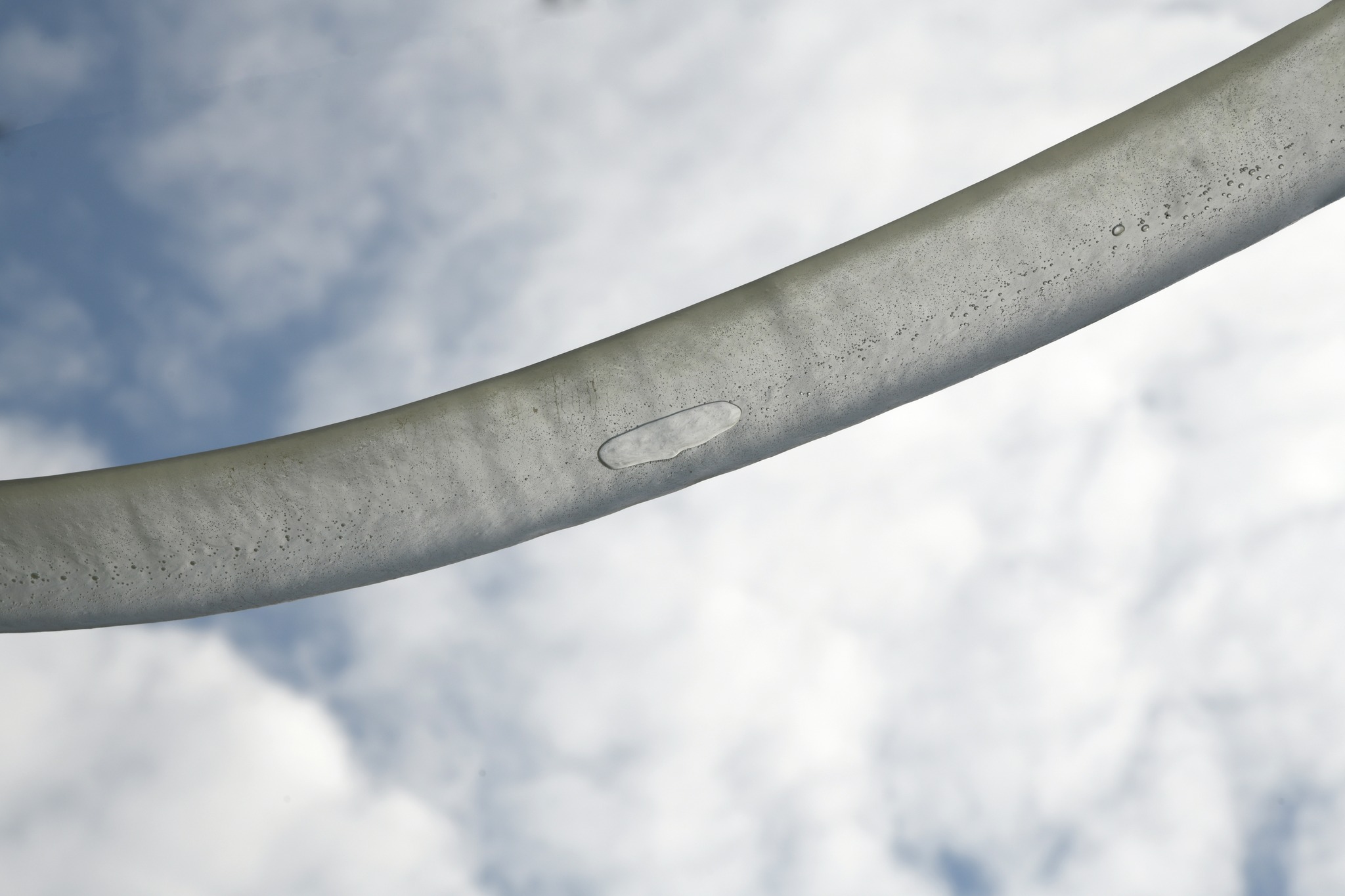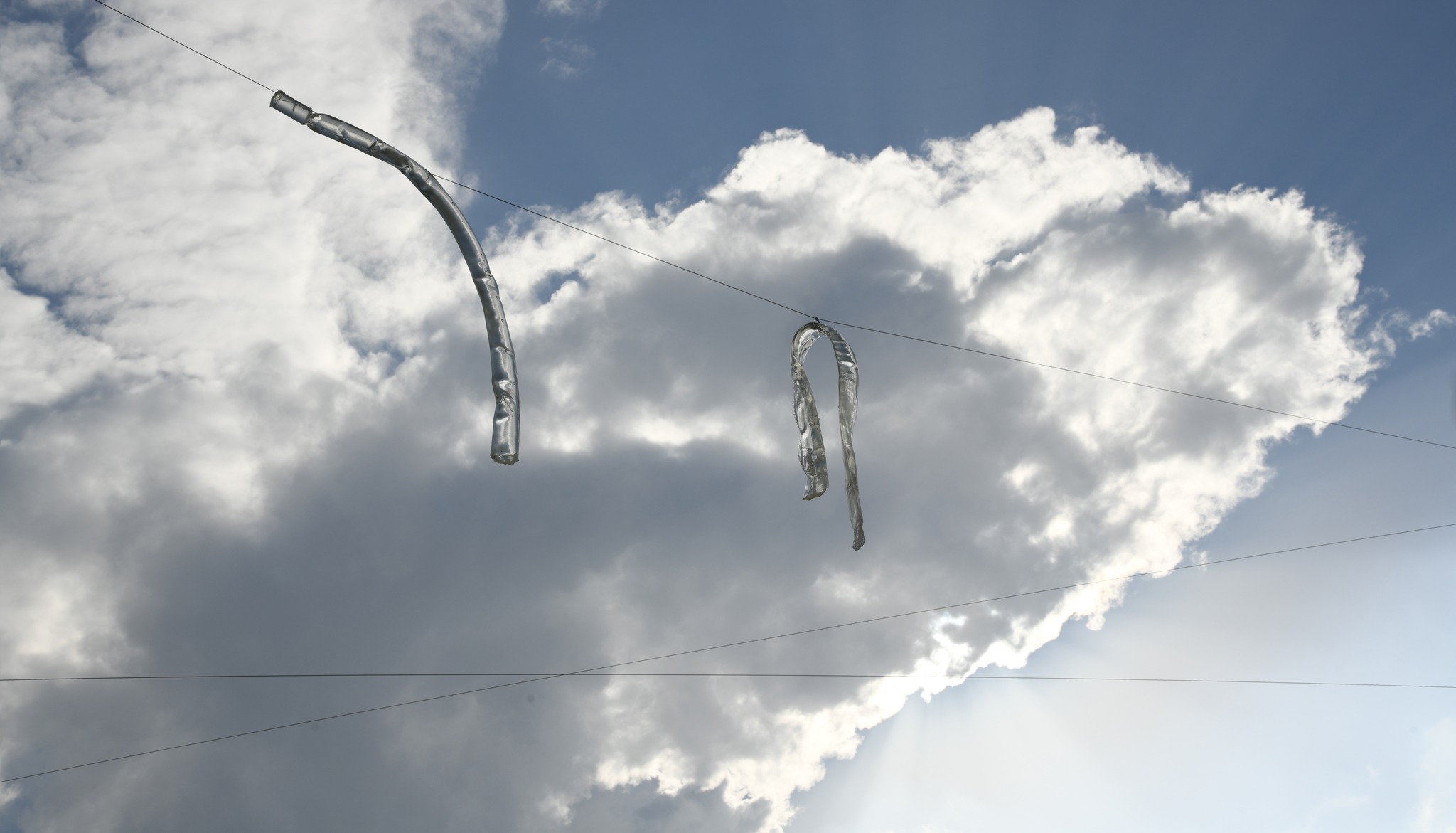Zgjim Zyba / Grey Eminence
The undisputed impact of technology on the evolution of humanity is closely linked to its role in determining and shifting individual and collective views about the present, future, and the imaginary. For his first solo show at the National Gallery of Kosovo, Zgjim Zyba presents two newly commisioned installations that explore the notion of sight and movement in relation to our perceptions altered and mediated by visual images that are disseminated through technological means.
The grey eminence of technology profoundly influences the social values created in the current global capitalist hegemony, serving as a tool of emancipation, and at the same time, confinement and control. Complementary to each other, technological and human evolution which goes far back into the 20th century, enable a perpetual unfolding of new perspectives on the world.
Hovering above the front yard of the gallery, several ‘eye floater’ sculptures, a simulacrum of the spots and particulars that tend to appear in a person’s sight when they look towards the sky, bright light, or in cases of a medical condition. Produced with resin in shapes that the artist recreated from seeing his own eye floaters, the sculptures are positioned in a motionless state contrary to the ones that appear in our vision. Myodesopsias, the medical term for eye floaters, are idiosyncratic each time they emerge. The work examines the dualism of objects we see through the embodied values which define and guide us on how to ‘see.’ The title of the work RE:ALL, which divides the term ‘real’ into two components, alludes to the elusive and fragmented nature of reality itself. Despite what signs and signifiers surround us, the perception of reality and the reflection on it comes differently to everyone. While looking at the work, with the sky in the background, one's eye floaters get mixed with the ones that are imposed on their vision as sculptures. As if each of us is an eye floater, we dissolve in the shared reality to which we are bound by individual and subjective ties.
At the entrance of the gallery, a pair of stairs made out of a sponge, are partially hanging on the awning of the building entrance, going inside the gallery through its roof. Walking in, the lobby of the gallery is transformed and seems to have been taken over the stairs that spread and lay on the ground. Questioning the functionality of a structure generally used for climbing to heights and low, Zyba created this work in response to the human achievements that develop technology at a galloping pace. We often find ourselves plunged into a great paradox considering technologies' role as the main agent for the transformation of human nature. The gray color of the stairs, a combination of white and black, is a deliberate choice as criticism of the societal inclinations towards the associations of white color as peaceful, and black as negative. The neutrality of the gray color is meant to represent clashes of arguments that occur between different movements and critics, which are in opposition to the approaches to what technology brings us.
Grey Eminence reflects on the ways we experience our bodies in the technological and visual environment that surrounds us. Together the works question the unique individuality of each human while pointing out the ways our approaches to understanding and experiencing are unconsciously shaped by outside circumstances.




